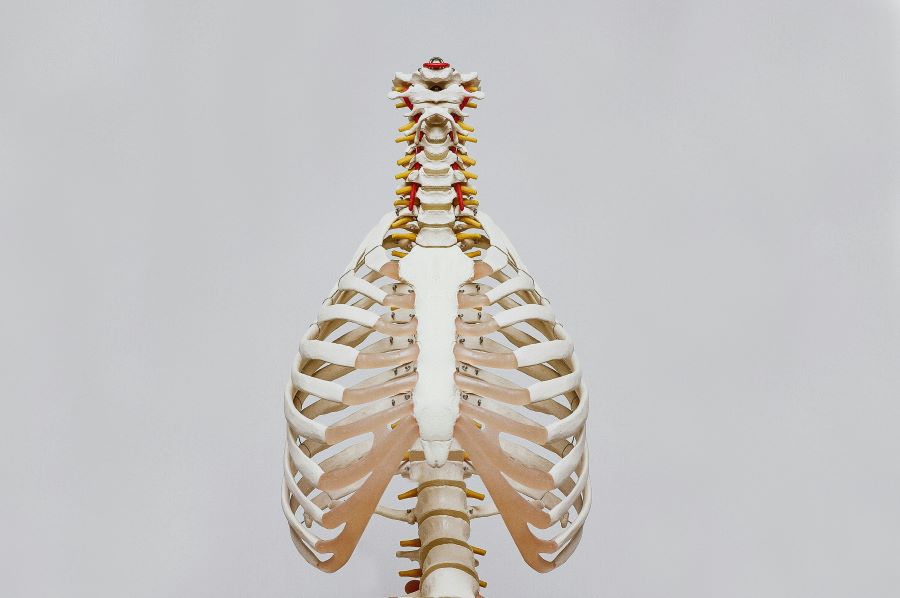The Importance of Treating the Ribs
Do you know why treating the ribs of your pregnant and postpartum clients is so important?
As a pelvic health provider, your primary focus is the pelvis. Though, as you most likely already know, we cannot treat one part of the body in isolation. We need to look at the whole person and the whole body. When it comes to pregnancy and postpartum care, assessing and treating the ribs is an integral part of your care treatment as it can help address pain and dysfunction, including prolapse, as well as create better positioning for the baby during birth.
Treating The Ribs in Pregnancy
As the uterus expands and the baby grows, the baby takes up more and more space until it puts pressure on the diaphragm and lower ribcage. The baby may use any part of its body to press up on the ribs, causing rib pain and dysfunction. The shorter-waisted a person is, the more pressure there will be on the abdominal wall, diaphragm and ribcage. The ribs need to expand and move for greater comfort in our pregnant clients. When they cannot, they create rib pain or thoracic spine pain.
Common Postural Pattern
One of the most common postural patterns I see in my pregnant clients is the pelvis in front of the heels, where the pelvis can be either anteriorly or posteriorly rotated. In this posture, the posterior rib cage gets tight with the thoracic spine going into extension or rib thrusting, possibly to make more room for the baby.
Issues From Postural Pattern
Let’s focus on the posterior ribcage or back wall of the ribcage for a moment. When your clients have tension in this area of their body due to the typical postural pattern in pregnancy, it can create several issues. Primarily, there will be increased tension on the anterior abdominal wall, which can decrease core strength, and in the postpartum period, it can contribute to less support to the pelvic organs. These issues must then be addressed in the postpartum period to help restore core strength and rectify potential issues that could lead to pelvic organ prolapse.
Treating the Ribs to Help with Baby’s Positioning
During pregnancy, the posterior rib tightness can cause issues with the baby’s positioning when the tension is unilateral. If someone has a tight posterior rib cage on the left, you will find that the baby is more off to the right. If the baby is head down into the pelvis, tightness on the left back of the ribs will cause the baby’s head to be slightly off to the right or possibly heading into the right hip area.
The posterior ribs must be addressed when the baby is off to one side to help with baby’s positioning for birth. It is essential to regularly assess the ribcage, and I highly encourage you to know how to address this tightness for better birth outcomes for your clients.
Treating The Ribs Postpartum
The ribs can take a lot of abuse from the baby inside the mom’s womb. It may have kicked, headbutted, or just plain butted them out of place depending on the baby’s position in the belly. Another issue with the ribs is they can be stuck in inhalation. Expanded out to the side, causing bra sizes (the number measurement around the ribcage) to increase. Assessing and treating the ribs, bringing them into a more neutral position with good mobility, helps your postpartum clients breathe easier and have less rib pain.
Rib Thrusting and Tension
Depending on your client’s postural habits during pregnancy, you may need to address tightness in the posterior ribcage and help get them out of rib thrusting. Psoas release may help get the ribs into a more neutral position as there is muscular attachment into the lower ribs from the psoas muscle. Addressing the diaphragm, liver and stomach areas is equally vital in normalizing the rib cage after birth. I teach you how to work with these areas, including the treatment techniques, in the Holistic Treatment of the Postpartum Body course.
Benefits of Treating the Ribs
Getting the ribcage into a more neutral position helps the diaphragm work better for stronger core activation and ease in taking a deep breath. It can also provide greater negative suction to the pelvic organs for those dealing with or having the potential for pelvic organ prolapse. Treating the ribs in postpartum clients provides them with the support they need after birth.
Treating The Ribs Education
The ribcage can be a complex structure to treat; however, treating the ribs is an essential part of pregnancy and postpartum care. When you use mobility testing and feel for hardness in the ribs, you can easily identify the dysfunctions. I offer a unique approach to assessing and treating the ribs that is super effective in the Holistic Treatment of the Postpartum Body course for those who are interested in learning more.
About the Author: Lynn Schulte is a Pelvic Health Therapist and the founder of the Institute for Birth Healing, a pelvic health continuing education organization that specializes in prenatal and postpartum care. For more information, go to https://instituteforbirthhealing.com

